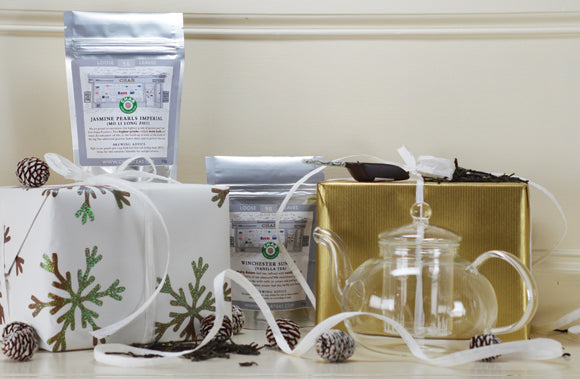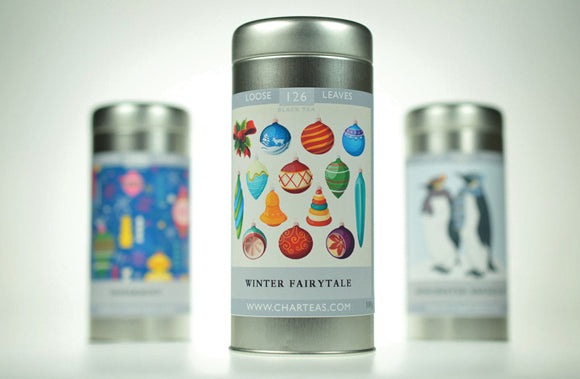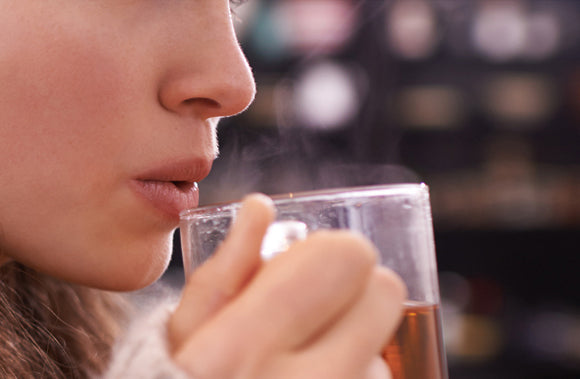
Tea Grades
Understanding tea grades, or the string of letters that are in many of our black tea titles, is a true mark of a tea enthusiast or professional. At Char, we primarily stock orthodox produced tea, which has long been associated with a higher quality of tea. We also have broken leaf (the highest grade of CTC: cut, tear, curl) teas, but do not stock fannings or dust – two lower grades of tea commonly found in budget teabags. It is important to note that tea grades are mainly used for Indian black teas.

Figure 1. Tea plant leaf grades
Orthodox Produced Tea (Whole Leaf Tea)
The orthodox production of tea preserves as much of the tea leaf as possible in order to provide the most superior and nuanced tea-drinking experience. This method is more time-consuming and requires more human interference, with freshly picked leaves withered, gently rolled, and oxidised to a particular specification for the tea it will become. Within this process, there are variations which are reflected in what we call ‘tea grades’. These are represented in the letter strings you will see on many of our teas at Char – signifiers of quality that you will understand through this article.
Table 1. Orthodox Tea Grade Initialisms
|
Grade |
Name |
|
OP |
Orange Pekoe |
|
FOP |
Flowery Orange Pekoe |
|
GFOP |
Golden Flowery Orange Pekoe |
|
TGFOP |
Tippy Golden Flowery Orange Pekoe |
|
FTGFOP |
Finest Tippy Golden Flowery Orange Pekoe |
|
FTGFOP1 |
Finest Tippy Golden Flowery Orange Pekoe [Grade] 1 |
Orange Pekoe
OP, or Orange Pekoe, does not refer to orange flavouring, but signifies the leaves on the tea plant that were used for the tea, typically the new flushes (growth) at the very top of the tea plant as they are opening into leaves.
‘Pekoe’ means new flush, and is said to derive from the Amoy dialect term白毫; Pe̍h-ōe-jī: pe̍h-ho for the delicate white hairs that coat new leaves. Orange, on the other hand, is said to come from the Dutch House of Orange, leant to the tea grade to signify what came to be associated with quality tea. While OP is typically a sign of a good quality tea due to the delicate flavours of the new growth tea leaves, is not considered to be the best available, but would greatly upgrade your morning tea.
Flowery Orange Pekoe
FOP is a higher growth on the tea plant, including the top two OP leaves of each shoot as well as the bud of a new leaf growth known as a tip. This results in a slightly more flowery-tasting cup, hence the name.
Golden Flowery Orange Pekoe
GFOP will have a higher proportion of tips than FOP, and of those tips more care will have been taken to preserve the end of the leaf buds as the name ‘golden’ refers to the appearance of these their golden tips– a beautiful and rich gold.
Tippy Golden Flowery Orange Pekoe/ Tippy Golden Flowery Orange Pekoe 1
TGFOP, the most common grade produced in Darjeeling and Assam, will have the highest possible amount of buds with golden tips. Char’s Assam Thowra is a gorgeous example of this category – perfect for anyone who enjoys a strong and malty cup of tea with depths of flavour.
Finest Tippy Golden Flowery Orange Pekoe/ Finest Tippy Golden Flowery Orange Pekoe 1
FTGFOP signifies a superbly high quality TGFOP, and FTGFOP1 exceeds even that in quality, with the ‘1’ applying only to the top quality available.
Within this highest quality category, Char has two Assam teas from which you can choose. The first, the Assam Mangalam, is a stunning light yet malty tea with spicy notes. The Assam Panitola, on the other hand, is a soft, mid-strength tea which is universally loved by all Assam tea drinkers.
Broken Leaf Tea Grades
‘Broken leaf’ refers to the shorter tea leaves that are left after the larger ‘whole’ leaves are sifted out. Most people in the UK will be familiar with broken leaf tea, as its compactness makes broken leaf tea cheaper to export, and ideal for use in teabags. It is typically considered to be bold, but more astringent and bitter than its whole leaf counterpart. This does not necessarily mean that broken leaf tea should be avoided, however, as broken leaf teas can still be very high quality! Look out for these tea grade indicators to find a high quality broken leaf tea.
Table 2. Broken Leaf Tea Grade Initialisms
|
Grade |
Name |
|
BOP |
Broken Orange Pekoe |
|
FBOP |
Flowery Broken Orange Pekoe |
Flowery Broken Orange Pekoe
FBOP includes the top two OP leaves of each shoot as well as the bud of a new leaf growth known as a tip. This results in a slightly more flowery-tasting cup, hence the name. At Char, we have a beautiful Assam tea which is a FBOP: New York Breakfast Tea – an ideal strong and malty brew which makes for a luxurious morning cup of tea.
I have given you only Assam teas in this description, now it is your turn to figure out the grades of our Darjeeling teas using what you have learnt! Follow this link to our Darjeeling teas for you to practice your new skill

 Assam
Assam
 Black
Black
 Breakfast
Breakfast
 Caffeine Free
Caffeine Free
 Ceylon
Ceylon
 Cold Brew
Cold Brew
 Darjeeling
Darjeeling
 Decaffeinated
Decaffeinated
 Earl Grey
Earl Grey
 Favourites
Favourites
 Flavoured
Flavoured
 Flowering
Flowering
 Fruit
Fruit
 Green
Green
 Herbal
Herbal
 Jasmine
Jasmine
 Mate
Mate
 Oolong
Oolong
 Organic
Organic
 Pu Erh
Pu Erh
 Rooibos
Rooibos
 Scented
Scented
 Smoked
Smoked
 Sparkling
Sparkling
 White
White
 Winchester
Winchester
 Loose Tea
Loose Tea
 Tea Bags
Tea Bags
 Gift Caddies
Gift Caddies
 Teapots
Teapots
 Accessories
Accessories
 Tea Tins
Tea Tins
 Storage
Storage


